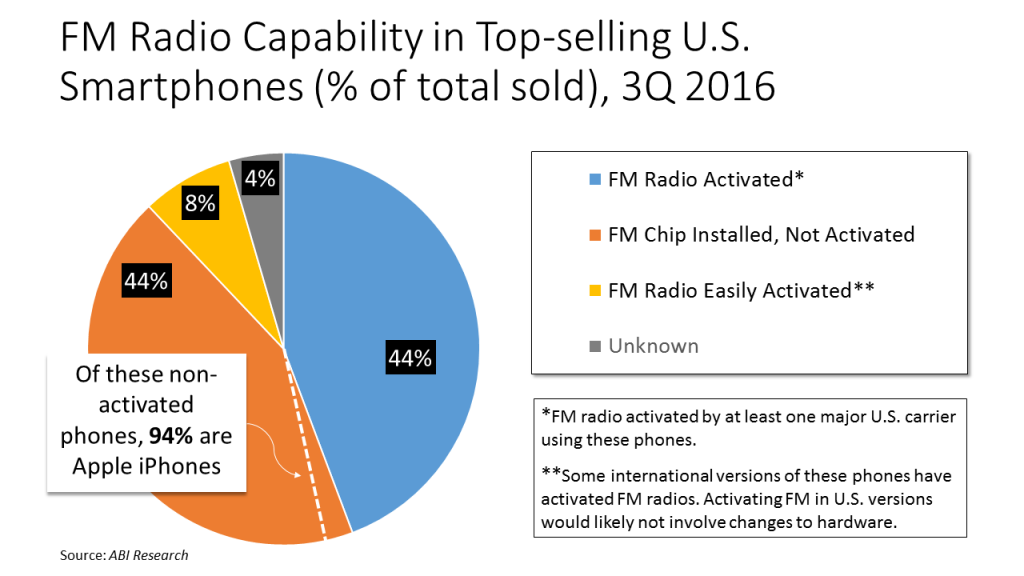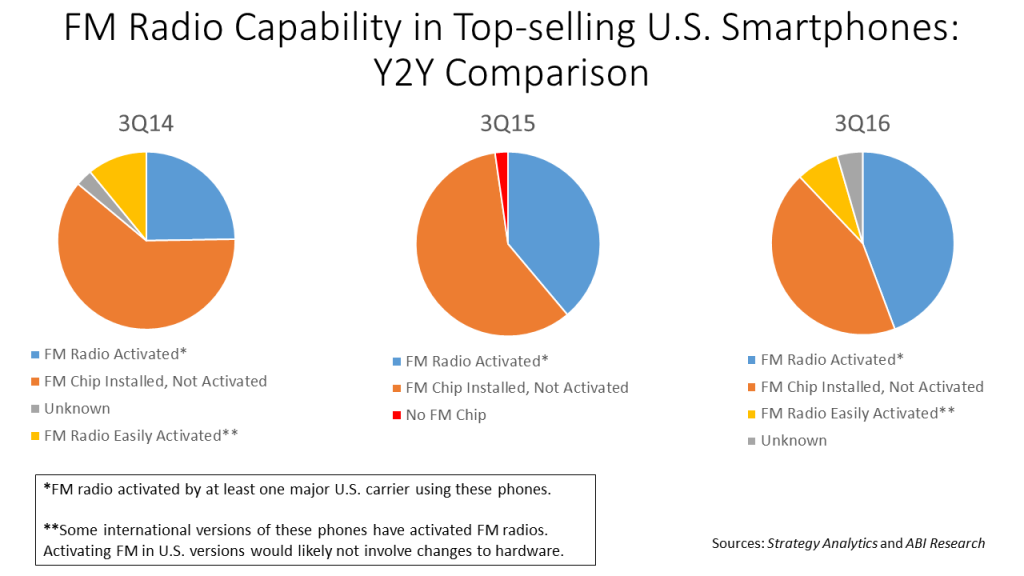PILOT has observed the activation of FM reception capabilities in popular smartphones since 2012, and has reported its findings throughout the period. When our analysis began, the percentage of smartphones with FM reception capability was in the single digits. In its most recent report, however, PILOT announces that an important milestone has been reached.
In the third quarter of 2016, PILOT’s analysis shows that the number of top-selling smartphones sold with FM reception capability enabled by at least one carrier has for the first time matched those sold without FM capability.
Our analysis further indicates that almost all of the Android smartphones sold during this period had FM reception capability enabled, and that nearly all (94%) of the smartphones sold without FM capability were Apple iPhones.
It is important to keep in mind that virtually all smartphones (including iPhones) contain the necessary hardware to receive FM, and so smartphones that do not activate FM reception are purposely designed as such, in that they disable an inherently available capability due to a choice made by the devices’ manufacturer, platform manager or wireless carrier.
Users of smartphones equipped with FM reception capability can enjoy the benefits of “hybrid radio,” via smartphone apps like NextRadio, which provide audio content via FM radio, without the impact that streaming audio has on a smartphone’s data plan or its battery life. (Online audio streaming requires up to 6 times the battery power of FM radio reception.) Hybrid radio also provides visual enhancements to the audio via the smartphone’s data connection, allowing the user to enjoy a richer experience.
The steady growth of FM reception capability in smartphones that PILOT has observed is shown in the year-to-year comparison below.



